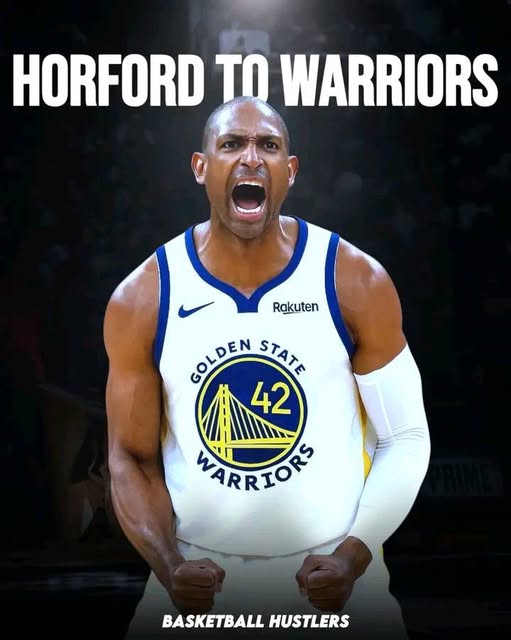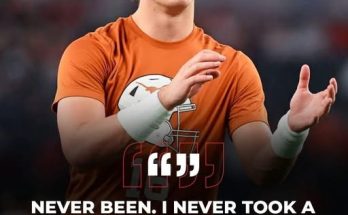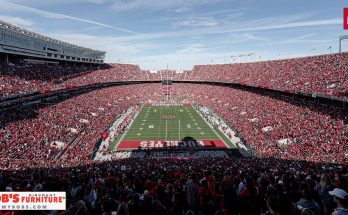Stephen Curry is no stranger to sending ripples through the NBA world, but his recent comments have sparked a fresh wave of speculation that could redefine the landscape of the Western Conference once again. In what many are calling a calculated hint rather than a casual suggestion, Curry floated the idea that the Golden State Warriors might pursue veteran big man Al Horford, now an unrestricted free agent after his contract with the Boston Celtics expired. The mere possibility of such a signing has ignited conversations across the league, among analysts, fans, and front offices alike, as it would not only speak volumes about Golden State’s ambitions but also about the enduring chess match of NBA roster construction.
To understand the magnitude of such a move, one must first appreciate the current state of the Warriors. This is a team that has danced between dynastic dominance and painful recalibration over the past half-decade. With four NBA championships in eight seasons, Golden State has already carved its place in the annals of basketball greatness. Yet the past two seasons have shown clear signs of vulnerability. The 2022-23 campaign ended in a frustrating playoff exit, and the 2023-24 season was a testament to inconsistency—flashes of brilliance buried under injuries, chemistry issues, and the difficult balancing act between developing young talent and contending with a veteran core.
Stephen Curry, now in his mid-thirties, remains the heart and soul of the franchise, and still one of the league’s premier talents. But even Curry’s brilliance has been unable to mask the Warriors’ need for smarter frontcourt play, defensive stability, and veteran leadership—three qualities that define Al Horford’s enduring legacy in the NBA. As such, Curry’s remark feels less like a flight of fancy and more like a coded message to the Warriors’ front office, or even a public recruiting pitch to a seasoned professional who could still tip the balance in a title race.
Horford is no stranger to high-stakes basketball. A five-time All-Star, a key cog in multiple playoff runs, and one of the most respected veterans in the league, he brings an IQ and versatility that have made him a favorite of coaches and teammates alike. With Boston, his impact extended well beyond the stat sheet. He offered switchability on defense, reliable outside shooting, and the kind of unflinching poise that championship teams require in crunch time. Even in his late thirties, Horford’s performances in key playoff series reminded the league of his value—he guarded MVPs, stretched defenses with his perimeter game, and served as a glue guy in one of the league’s most elite systems.
If he were to join the Warriors, Horford wouldn’t be asked to carry a heavy load. He’d slide into a role that suits him perfectly at this stage of his career: a stabilizing force who can start or come off the bench, knock down open threes, defend in space, and mentor younger bigs like Trayce Jackson-Davis or even help anchor small-ball lineups when Draymond Green needs a break. That kind of contribution may not make highlight reels, but it wins playoff games. And that, ultimately, is what the Warriors and Curry are after—another deep run, another shot at the crown before the championship window closes completely.
But it’s not just about fit—it’s also about timing and opportunity. Golden State is in a precarious financial situation. With a ballooning payroll and new luxury tax rules limiting their flexibility, they must be surgical in how they use their available tools. Signing Horford would likely require him to take a significant pay cut, but that might not be out of the question. He’s earned over \$250 million in his career. If winning another championship is his top priority, and if he values the opportunity to play alongside a generational star like Curry in a system that would allow him to thrive without overexerting himself, the Warriors may have a compelling pitch.
From a leadership perspective, the idea becomes even more attractive. The Warriors have often been lauded for their championship culture, but maintaining that cohesion amid transitions has been one of their greatest challenges. The departure of key veterans like Andre Iguodala left a gap that wasn’t fully filled by younger talent or the front office’s additions. Horford’s presence in the locker room would be invaluable. He’s the type of player who commands respect, leads by example, and keeps teammates accountable. Those are intangibles that pay off when the stakes are highest.
Moreover, the basketball fit is tantalizing. Imagine Horford and Green switching pick-and-rolls on defense, confusing opponents with their intelligence and communication. Picture Horford setting screens for Curry, then popping to the three-point line and forcing defenses to make impossible decisions. Envision him operating as a secondary playmaker, finding cutters like Klay Thompson or Jonathan Kuminga from the high post. These are the kinds of sequences that define winning teams, and Horford can be a part of them.
There’s also something poetic about the potential move. Horford and Curry, two of the most respected veterans of their generation, teaming up late in their careers to make one last push. Neither has anything left to prove individually, but both still have something to chase collectively. For Curry, it would be a chance to cement his legacy with a fifth ring and further separate himself from his peers in the all-time rankings. For Horford, it would be the elusive championship that has thus far escaped him—a crowning achievement for a player whose contributions have often been overshadowed by flashier stars.
There are, of course, hurdles. Horford is likely to have multiple suitors. Contenders like the Bucks, Suns, or even a return to Boston remain options. And while Golden State offers a rich culture and opportunity, the financial logistics will require some maneuvering. General Manager Mike Dunleavy Jr. and the Warriors’ front office will need to get creative, potentially clearing salary or using exceptions in ways that preserve flexibility while still acquiring the right talent. If Curry’s comment was a signal, then it’s up to the front office to answer it.
Ultimately, this moment feels like a microcosm of the modern NBA—where superstars are as much recruiters as they are athletes, where legacy and opportunity intersect in unexpected ways, and where the final chapters of great careers are often shaped by relationships, timing, and mutual ambition. Curry’s hint isn’t just about one player—it’s about vision. It’s about the Warriors refusing to go quietly, refusing to fade into irrelevance, and choosing instead to retool, reimagine, and possibly reload for one final shot at glory.
And should Horford take that leap, the league would be wise to take notice. Not because it’s a flashy move or one that will dominate headlines in the way blockbuster trades do, but because it’s the kind of move that wins in May and June. The kind of move that reflects an organization still committed to excellence. The kind of move that says the dynasty isn’t dead—it’s just recalibrating.
Curry’s words, carefully chosen and strategically delivered, may well have been the first domino. Now it’s up to the rest of the pieces to fall into place. If they do, and if Horford dons the blue and gold, basketball fans everywhere might find themselves watching one of the most compelling veteran alliances in recent memory. One that isn’t built on hype, but on experience, IQ, and the relentless pursuit of one more ring.


